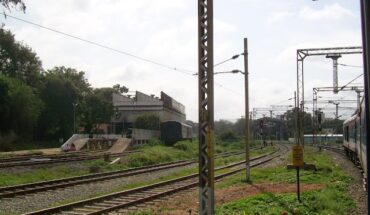Harsh Vardhan stresses on an efficient food value chain to feed growing populations What’s for dinner? The answer concerns every living being. Food connects us all and is tied to our community, traditions, our past and our future. The challenge to feed the 10 billion population by mid-century is therefore being deliberated on several fronts. It demands efficient ways of production that are both economically viable and ecologically sustainable. Fortunately, technologies are emerging that revamp the traditional approach of farm to fork and with a lower environmental footprint. One of the largest producers of fruits and vegetables in the world to boost processed food in large quantities, India has formulated a unique Production-Linked Incentive Scheme (PLIS) which aims to incentivise incremental sales.
A sum of Rs 10,900 crore has been earmarked for the scheme and to date, 60 applicants have already been selected under Category 1 which incentivises firms for incremental sales and branding/marketing initiatives taken abroad. Beneficiaries have been obliged to commit a minimum investment while applying for the scheme. Assuming the committed investment as a fixed ratio of their sales and undertaking execution of at least 75% of the projects, the sector is likely to witness at least Rs 6,500 crore worth of investment over the next two years.
A study in the United States concluded that a 1% increase in public infrastructure increased the food manufacturing output by 0.06% in the longer run . This correlation holds good for India too as a higher investment is being concentrated in States such as Andhra Pradesh, Gujarat, Maharashtra, Tamil Nadu and Uttar Pradesh. These States as reported by the Good Governance Index 2020-21, ranked among the highest in the ‘Public Infrastructure and Utilities’ parameter with ‘Connectivity to Rural Habitations’ showing the highest improvement . For the exports market, it is now established that sales promotion is positively related to increased sales volume, but inversely related to profitability. To bridge this gap, of the 13 key sectors announced under the PLIS, the ‘Food Processing PLIS’ earmarks a dedicated Category 3 for supporting branding and marketing activities in foreign markets. This ensures that India’s share of value-added products in the exports basket is improved, and it may leverage on its unique geographical proximity to the untapped markets of Europe, the Middle East/West Asia, Africa, Oceania and Japan.
Easing access to credit
As a result of the novel coronavirus pandemic, the past two years have been witnessing a significant number of people working from home. This has accelerated the demand for products from the ready-to-eat market which saw a rise of approximately 170% in sales volume between March-June 2020, as stated by Netscribes (global data and insights firm). The pandemic has bolstered consumer awareness of functional foods, which is expected to provide a launchpad for health-orientated start-ups and micro-food processing units. However, the access of micro, small, and medium enterprises (MSMEs) to finance is a perennial problem in the country, predominating due to a lack of proper credit history mechanism for MSMEs.
Smart financing alternatives such as peer-to-peer (P2P) lending hold potential for micro-food processors as can be observed by the United Kingdom Government-owned British Business Bank (akin to India’s MUDRA Bank, or Micro Units Development and Refinance Agency Bank) which has helped more than 1,18,000 small businesses get access to more than U.S.$17.88 billion. Access to working capital has in theory been addressed by the Trade Receivables Discounting System (TReDS), a platform for facilitating the financing/discounting of trade receivables of MSMEs through multiple financiers.
However, the platform requires considerable scaling-up and simultaneous enforcement of stringent measures for corporates to comply with. Integrating the TReDS platform with the Goods and Service Tax Network’s e-invoicing portal will make TReDS more attractive and give relief to financiers.
A sustainable food ecosystem
With growing populations, changing food habits and unrestricted use of natural resources, nations must come together and lay out a road map for a common efficient food value chain. New alternatives are being explored which have immense potential in replacing the staples of rice and wheat in the form of Nutri-cereals, plant-based proteins, fermented foods, health bars and even fresh fortified foods for pets. By welcoming the new brands in the category, PLIS aims to create an enabling ecosystem for innovation in both food products and processes. Post the 1929 Great Depression, hemlines of a skirt were indexed to predict the financial state. Almost a century later, luminosity and night lights data obtained from satellites indicate the extent of economic progress. No wonder, 50 years hence, the progress of nations will be benchmarked to their ability to sustainably feed their populations. Harsh Vardhan, an IIM-Ahmedabad graduate, is a thought leader for Invest India (under the Department for Promotion of Industry and Internal Trade, Ministry of Commerce and Industry, Government of India). Views are personal




